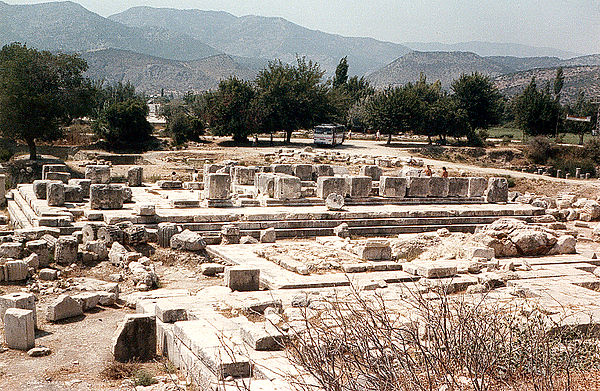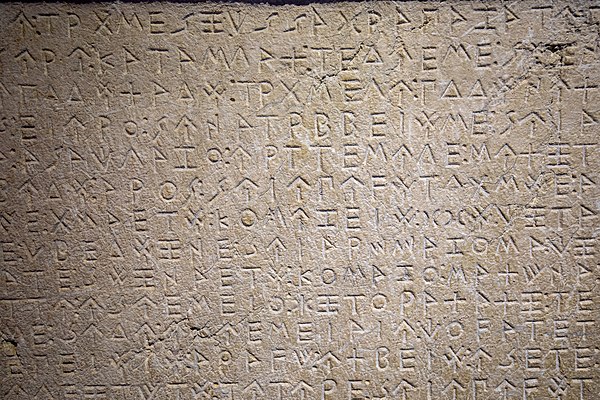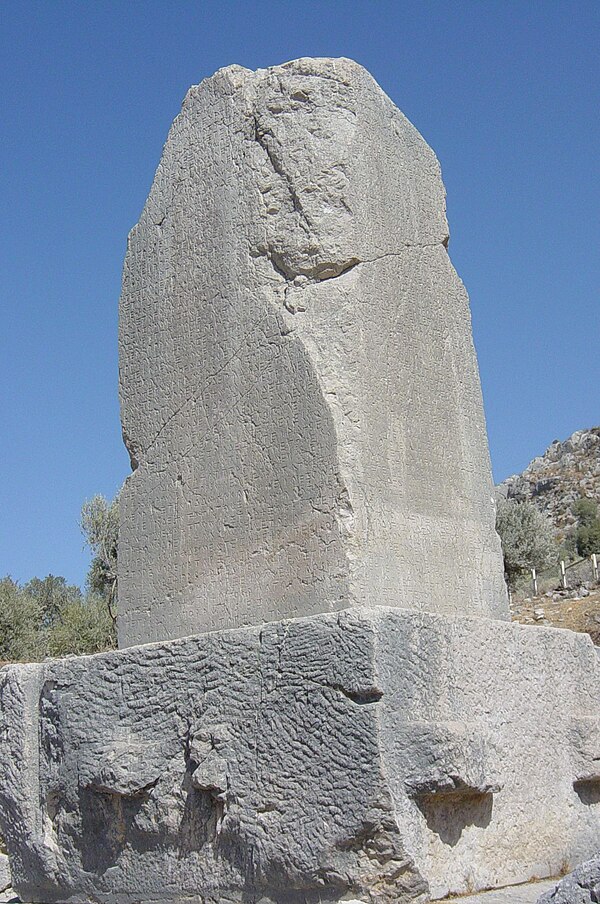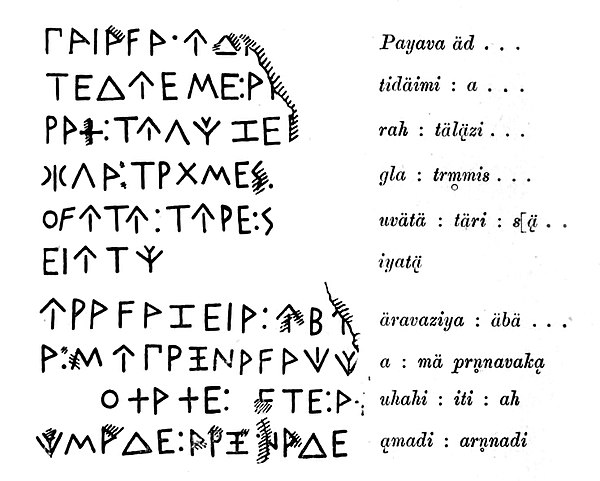Letoon trilingual
Videos
Page
The Letoon trilingual, or Xanthos trilingual, is an inscription in three languages: standard Lycian or Lycian A, Greek, and Aramaic covering the faces of a four-sided stone stele called the Letoon Trilingual Stele, discovered in 1973 during the archeological exploration of the Letoon temple complex, near Xanthos, ancient Lycia, in present-day Turkey. It was created when Lycia was under the sway of the Persian Achaemenid Empire. The inscription is a public record of a decree authorizing the establishment of a cult, with references to the deities, and provisions for officers in the new cult. The Lycian requires 41 lines; the Greek, 35 and the Aramaic, 27. They are not word-for-word translations, but each contains some information not present in the others. The Aramaic is somewhat condensed.

The Letoon trilingual stele in Fethiye Museum.

Lētōon temple complex. The foundations of the three temples are clearly visible.

Close up of the text from the stele

Letoon trilingual stele, portion in Lycian.
Lycian language
Videos
Page
The Lycian language was the language of the ancient Lycians who occupied the Anatolian region known during the Iron Age as Lycia. Most texts date back to the fifth and fourth century BC. Two languages are known as Lycian: regular Lycian or Lycian A, and Lycian B or Milyan.
Lycian became extinct around the beginning of the first century BC, replaced by the Ancient Greek language during the Hellenization of Anatolia. Lycian had its own alphabet, which was closely related to the Greek alphabet but included at least one character borrowed from Carian as well as characters proper to the language. The words were often separated by two points.

Xanthos stele with Lycian inscriptions
![Payava (his name is Pamphylian) as depicted on his tomb. The Lycian inscription runs: “Payava, son of Ed[...], acquired [this grave] in the sacred [bu](https://upload.wikimedia.org/wikipedia/commons/thumb/f/fb/Tomb_Payava_south_BM_950.jpg/600px-Tomb_Payava_south_BM_950.jpg)
Payava (his name is Pamphylian) as depicted on his tomb. The Lycian inscription runs: “Payava, son of Ed[...], acquired [this grave] in the sacred [burial] area of the acropolis(?) of A[rttumba]ra (a Lycian ruler), when Lycia saw(?) S[alas](??) [as governor(?)]. This tomb I made, a 10 year [h]iti (project?), by means of Xanthian ahamas.” Payava may be the soldier at the right, honoring his ruler Arttumbara with a laurel wreath. 375-360 BC.

The inscription on the front of Payava's tomb in the Lycian language.

Lycian alphabet: an early attempt at transliteration